Author Photo And Bio
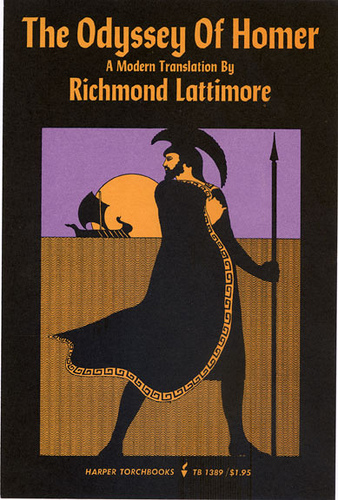 1. The Odyssey by Homer (ninth century b.c.e.?). Where The Iliad tells of war, The Odyssey is the story of survival and reconciliation following the ten-year battle with Troy. Where Achilles was defined by warrior brutality, Odysseus, King of Ithaca, is defined by his intelligence and wit. This epic poem follows Odysseus on his adventures as he struggles —against the threats of sea monsters and the temptation of the sirens’ song —to be reunited with his son Telemachus, his faithful, clever queen Penelope, and their kingdom.
1. The Odyssey by Homer (ninth century b.c.e.?). Where The Iliad tells of war, The Odyssey is the story of survival and reconciliation following the ten-year battle with Troy. Where Achilles was defined by warrior brutality, Odysseus, King of Ithaca, is defined by his intelligence and wit. This epic poem follows Odysseus on his adventures as he struggles —against the threats of sea monsters and the temptation of the sirens’ song —to be reunited with his son Telemachus, his faithful, clever queen Penelope, and their kingdom.
 2. Hamlet by William Shakespeare (1600). The most famous play ever written, Hamlet tells the story of a melancholic prince charged with avenging the murder of his father at the hands of his uncle, who then married his mother and, becoming King of Denmark, robbed Hamlet of the throne. Told the circumstances of this murder and usurpation by his father’s ghost, Hamlet is plunged deep into brilliant and profound reflection on the problems of existence, which meditations delay his revenge at the cost of innocent lives. When he finally acts decisively, Hamlet takes with him every remaining major character in a crescendo of violence unmatched in Shakespearean theater.
2. Hamlet by William Shakespeare (1600). The most famous play ever written, Hamlet tells the story of a melancholic prince charged with avenging the murder of his father at the hands of his uncle, who then married his mother and, becoming King of Denmark, robbed Hamlet of the throne. Told the circumstances of this murder and usurpation by his father’s ghost, Hamlet is plunged deep into brilliant and profound reflection on the problems of existence, which meditations delay his revenge at the cost of innocent lives. When he finally acts decisively, Hamlet takes with him every remaining major character in a crescendo of violence unmatched in Shakespearean theater.
 3. War and Peace by Leo Tolstoy (1869). Mark Twain supposedly said of this masterpiece, “Tolstoy carelessly neglects to include a boat race.” Everything else is included in this epic novel that revolves around Napoleon’s invasion of Russia in 1812. Tolstoy is as adept at drawing panoramic battle scenes as he is at describing individual feeling in hundreds of characters from all strata of society, but it is his depiction of Prince Andrey, Natasha, and Pierre —who struggle with love and with finding the right way to live —that makes this book beloved.
3. War and Peace by Leo Tolstoy (1869). Mark Twain supposedly said of this masterpiece, “Tolstoy carelessly neglects to include a boat race.” Everything else is included in this epic novel that revolves around Napoleon’s invasion of Russia in 1812. Tolstoy is as adept at drawing panoramic battle scenes as he is at describing individual feeling in hundreds of characters from all strata of society, but it is his depiction of Prince Andrey, Natasha, and Pierre —who struggle with love and with finding the right way to live —that makes this book beloved.
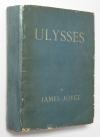 4. Ulysses by James Joyce (1922). Filled with convoluted plotting, scrambled syntax, puns, neologisms, and arcane mythological allusions, Ulysses recounts the misadventures of schlubby Dublin advertising salesman Leopold Bloom on a single day, June 16, 1904. As Everyman Bloom and a host of other characters act out, on a banal and quotidian scale, the major episodes of Homer’s Odyssey —including encounters with modern-day sirens and a Cyclops —Joyce’s bawdy mock-epic suggests the improbability, perhaps even the pointlessness, of heroism in the modern age.
4. Ulysses by James Joyce (1922). Filled with convoluted plotting, scrambled syntax, puns, neologisms, and arcane mythological allusions, Ulysses recounts the misadventures of schlubby Dublin advertising salesman Leopold Bloom on a single day, June 16, 1904. As Everyman Bloom and a host of other characters act out, on a banal and quotidian scale, the major episodes of Homer’s Odyssey —including encounters with modern-day sirens and a Cyclops —Joyce’s bawdy mock-epic suggests the improbability, perhaps even the pointlessness, of heroism in the modern age.
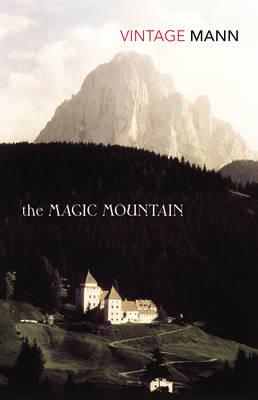 5. The Magic Mountain by Thomas Mann (1924). Hans Castorp visits his cousin at a sanatorium in the mountains of Switzerland. Soon he too becomes ill (maybe) and checks into the hospital —for seven years. In this sanctuary, Hans and the sanatorium’s denizens endlessly debate questions of morality, politics, and culture, as the “real world” moves inexorably toward the horror of World War I. A meditation on time, an inquiry into how life ought to be lived, and an unflinching look at evil, Mann considered the ideas in his monumental novel so challenging that he said it must be read at least twice.
5. The Magic Mountain by Thomas Mann (1924). Hans Castorp visits his cousin at a sanatorium in the mountains of Switzerland. Soon he too becomes ill (maybe) and checks into the hospital —for seven years. In this sanctuary, Hans and the sanatorium’s denizens endlessly debate questions of morality, politics, and culture, as the “real world” moves inexorably toward the horror of World War I. A meditation on time, an inquiry into how life ought to be lived, and an unflinching look at evil, Mann considered the ideas in his monumental novel so challenging that he said it must be read at least twice.
 6. Ficciones by Jorge Luis Borges (1944). Few twentieth-century literary works were as influential as Borges’s first collection of surreal “fictions.” Showcasing his deeply serious, brilliantly playful fascination with language, literature, and metaphysics, these seventeen stories—about imaginary books and labyrinthine libraries, cosmic detectives and strange lands—ask us to wonder about how we know what we know (or think we know) while helping light the fuse of postmodern pyrotechnics.
6. Ficciones by Jorge Luis Borges (1944). Few twentieth-century literary works were as influential as Borges’s first collection of surreal “fictions.” Showcasing his deeply serious, brilliantly playful fascination with language, literature, and metaphysics, these seventeen stories—about imaginary books and labyrinthine libraries, cosmic detectives and strange lands—ask us to wonder about how we know what we know (or think we know) while helping light the fuse of postmodern pyrotechnics.
 7. Rabbit Angstrom — Rabbit, Run (1960), Rabbit Redux (1971), Rabbit Is Rich (1981), Rabbit at Rest (1990) — by John Updike. Read as four discrete stories or as a seamless quartet, the Rabbit novels are a tour de force chronicle, critique, and eloquent appreciation of the American white Protestant middle-class male and the swiftly shifting culture around him in the last four decades of the twentieth century. From his feckless youth as a promising high school athlete and unready husband and father in Rabbit, Run; through vulgar affluence, serial infidelity, and guilt as a car dealer in Rabbit Redux; to angry bewilderment over 1970s social upheaval in Rabbit Is Rich, the meaningfully named Rabbit Angstrom gamely tries to keep up with it all, to be a good guy. But the world is too much with, and for, Rabbit, who staggers through literal and metaphorical heart failure before finally falling in Rabbit at Rest.
7. Rabbit Angstrom — Rabbit, Run (1960), Rabbit Redux (1971), Rabbit Is Rich (1981), Rabbit at Rest (1990) — by John Updike. Read as four discrete stories or as a seamless quartet, the Rabbit novels are a tour de force chronicle, critique, and eloquent appreciation of the American white Protestant middle-class male and the swiftly shifting culture around him in the last four decades of the twentieth century. From his feckless youth as a promising high school athlete and unready husband and father in Rabbit, Run; through vulgar affluence, serial infidelity, and guilt as a car dealer in Rabbit Redux; to angry bewilderment over 1970s social upheaval in Rabbit Is Rich, the meaningfully named Rabbit Angstrom gamely tries to keep up with it all, to be a good guy. But the world is too much with, and for, Rabbit, who staggers through literal and metaphorical heart failure before finally falling in Rabbit at Rest.
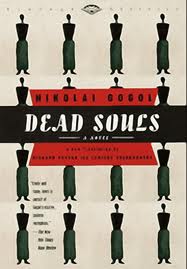 8. Dead Souls by Nikolai Gogol (1842). Gogol’s self-proclaimed narrative “poem” follows the comical ambitions of Chichikov, who travels around the country buying the “dead souls” of serfs not yet stricken from the tax rolls. A stinging satire of Russian bureaucracy, social rank, and serfdom, Dead Souls also soars as Gogol’s portrait of “all Russia,” racing on “like a brisk, unbeatable troika” before which “other nations and states step aside to make way.”
8. Dead Souls by Nikolai Gogol (1842). Gogol’s self-proclaimed narrative “poem” follows the comical ambitions of Chichikov, who travels around the country buying the “dead souls” of serfs not yet stricken from the tax rolls. A stinging satire of Russian bureaucracy, social rank, and serfdom, Dead Souls also soars as Gogol’s portrait of “all Russia,” racing on “like a brisk, unbeatable troika” before which “other nations and states step aside to make way.”
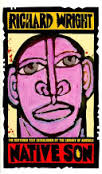 9. Native Son by Richard Wright (1945). Set in Chicago in the 1930s, this novel tells the story of Bigger Thomas, an African American twisted and trapped by penury and racism. Bigger is on his way out of poverty when he accidently murders his employer’s daughter, a white woman. In this highly charged, deeply influential novel, Wright portrays a black man squeezed by crushing circumstances who comes to understand his own identity.
9. Native Son by Richard Wright (1945). Set in Chicago in the 1930s, this novel tells the story of Bigger Thomas, an African American twisted and trapped by penury and racism. Bigger is on his way out of poverty when he accidently murders his employer’s daughter, a white woman. In this highly charged, deeply influential novel, Wright portrays a black man squeezed by crushing circumstances who comes to understand his own identity.
 10. The Grapes of Wrath by John Steinbeck (1939). A powerful portrait of Depression-era America, this gritty social novel follows the Joad family as they flee their farm in the Oklahoma dust bowl for the promised land of California. While limping across a crippled land, Ma and Pa Joad, their pregnant daughter Rose of Sharon, and their recently paroled son Tom sleep in ramshackle Hoovervilles filled with other refugees and encounter hardship, death, and deceit. While vividly capturing the plight of a nation, Steinbeck renders people who have lost everything but their dignity.
10. The Grapes of Wrath by John Steinbeck (1939). A powerful portrait of Depression-era America, this gritty social novel follows the Joad family as they flee their farm in the Oklahoma dust bowl for the promised land of California. While limping across a crippled land, Ma and Pa Joad, their pregnant daughter Rose of Sharon, and their recently paroled son Tom sleep in ramshackle Hoovervilles filled with other refugees and encounter hardship, death, and deceit. While vividly capturing the plight of a nation, Steinbeck renders people who have lost everything but their dignity.